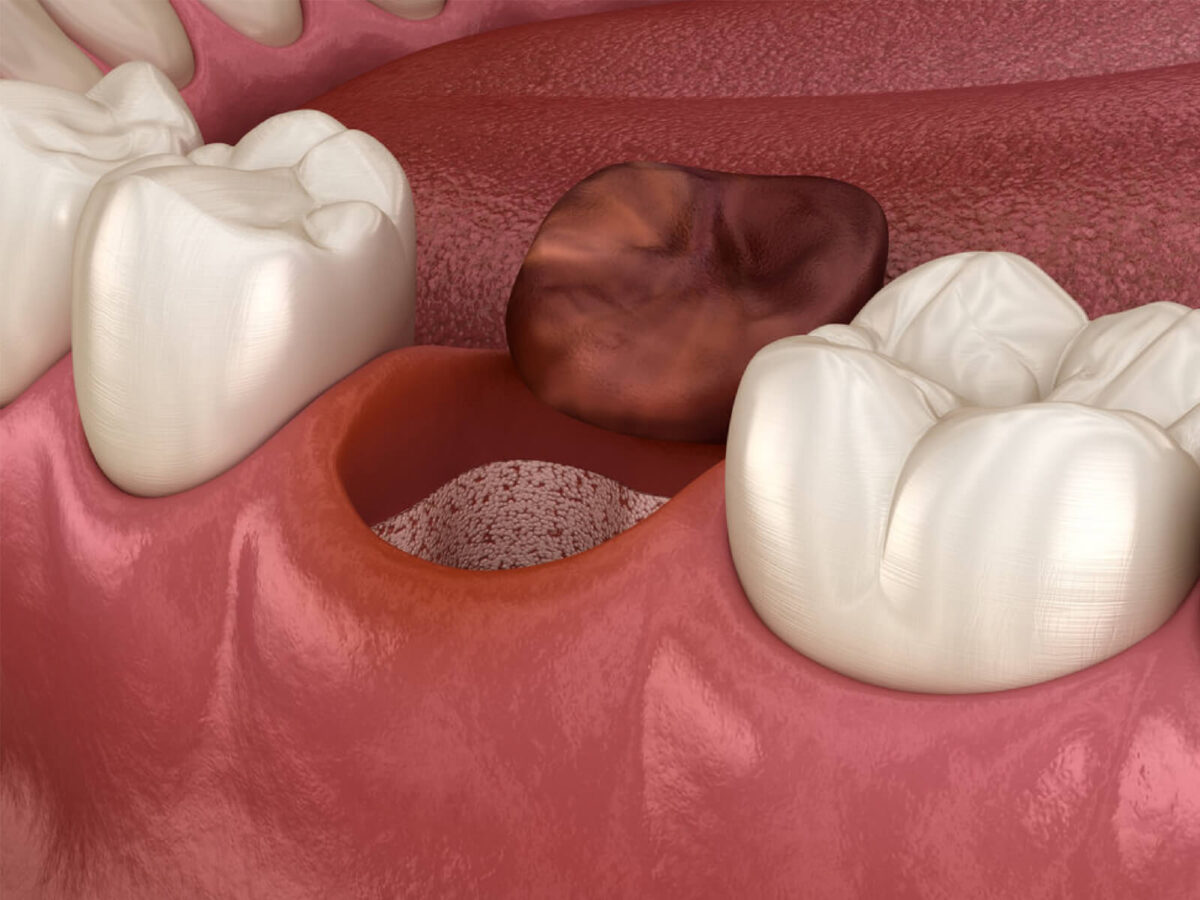Blog
Dental hygiene tips for healthy teeth & gums

What Does a Dry Socket Look Like?
Dry socket, also known as alveolar osteitis, is a painful dental condition that can occur following a tooth extraction. While the healing process after tooth extraction is typically straightforward, complications like dry sockets can arise. In this post, we will explore what a dry socket looks like, the signs and symptoms it presents, its causes, and the recommended treatments.
What Is a Dry Socket?
A dry socket occurs when the blood clot that forms in the socket after a tooth extraction becomes dislodged or dissolves before the area fully heals. This exposure exposes the underlying bone, leading to increased pain, discomfort, and a delay in the healing process.
Signs and Symptoms of Dry Socket:
- Intense Pain: A dry socket is characterized by severe and throbbing pain that often radiates to the ear and neck. The absence of a protective blood clot exposes the bone and nerve endings, resulting in heightened sensitivity and discomfort.
- Bad Breath and Taste: Individuals with a dry socket may experience bad breath and an unpleasant taste in their mouth. The exposed bone can release unpleasant odors, leading to bad breath and an unpleasant taste.
- Visible Bone: In some cases, the exposed bone may be visible within the socket. If the clot covering the extraction site is dislodged or loosened, the underlying bone becomes exposed.
- Swelling and Soreness: Swelling of the surrounding tissues and soreness in the jaw and cheek may occur. The inflammatory response to the exposed bone can lead to localized swelling and pain.
- Increased Pain with Irritants: Pain intensifies when exposed to irritants such as air, fluids, or certain foods. The exposed bone and nerve endings are more susceptible to irritation, causing pain to worsen upon exposure to external stimuli.
Appearance of a Dry Socket:
- Empty Socket: A dry socket can result in an empty or partially filled socket after tooth extraction, where the blood clot has been dislodged or dissolved.
- Exposed Bone: In severe cases of dry socket, the underlying bone within the socket may become visible, appearing as a whitish or yellowish surface.
- Inflammation: The surrounding tissues of the affected area may exhibit signs of inflammation, including redness, swelling, and increased sensitivity.
- Visible Blood Clot Loss: If a blood clot forms following extraction, its loss or dislodgment may be visible within the socket.
Causes of Dry Socket:
- Excessive Trauma or Manipulation During Extraction: Excessive trauma or manipulation during tooth extraction can disrupt the formation and stability of the blood clot.
- Infection: Pre-existing infections or bacterial contamination during extraction can hinder proper blood clot formation.
- Tobacco Use: Tobacco use can impair blood clot formation and elevate the risk of dry sockets.
- Oral Contraceptives: Hormonal factors, such as the use of oral contraceptives, can affect blood clot development and contribute to dry sockets.
- Inadequate Oral Hygiene: Poor oral hygiene practices following extraction can lead to infection, disrupting the healing process.
- Pre-existing Dental Conditions: Conditions like periodontal disease or a weakened immune system may increase the risk of developing dry sockets.
Management and Treatment:
- Pain Management: Nonsteroidal anti-inflammatory drugs (NSAIDs) or prescription pain medications may be prescribed to alleviate pain and reduce inflammation.
- Irrigation and Dressings: The socket may be irrigated to remove debris, and a medicated dressing can be applied to aid in healing.
- Antibiotics: Antibiotics may be administered to address bacterial involvement if there are signs of infection.
- Avoidance of Irritants: Patients are advised to refrain from activities that may disrupt the healing process, such as smoking, vigorous rinsing, or consuming hot and spicy foods.
- Topical Anesthetics: Topical anesthetics or gels can be applied directly to the affected area to provide relief from pain and discomfort.
Conclusion:
Recognizing the signs and symptoms of dry sockets is crucial for obtaining timely treatment and effectively managing this painful condition. Patients undergoing tooth extraction should follow postoperative instructions, practice proper dental hygiene, and promptly report any unexpected symptoms to their dentist.
Dry sockets can be treated, and the healing process can be resumed with appropriate care and management, ensuring the patient’s optimal dental health.


